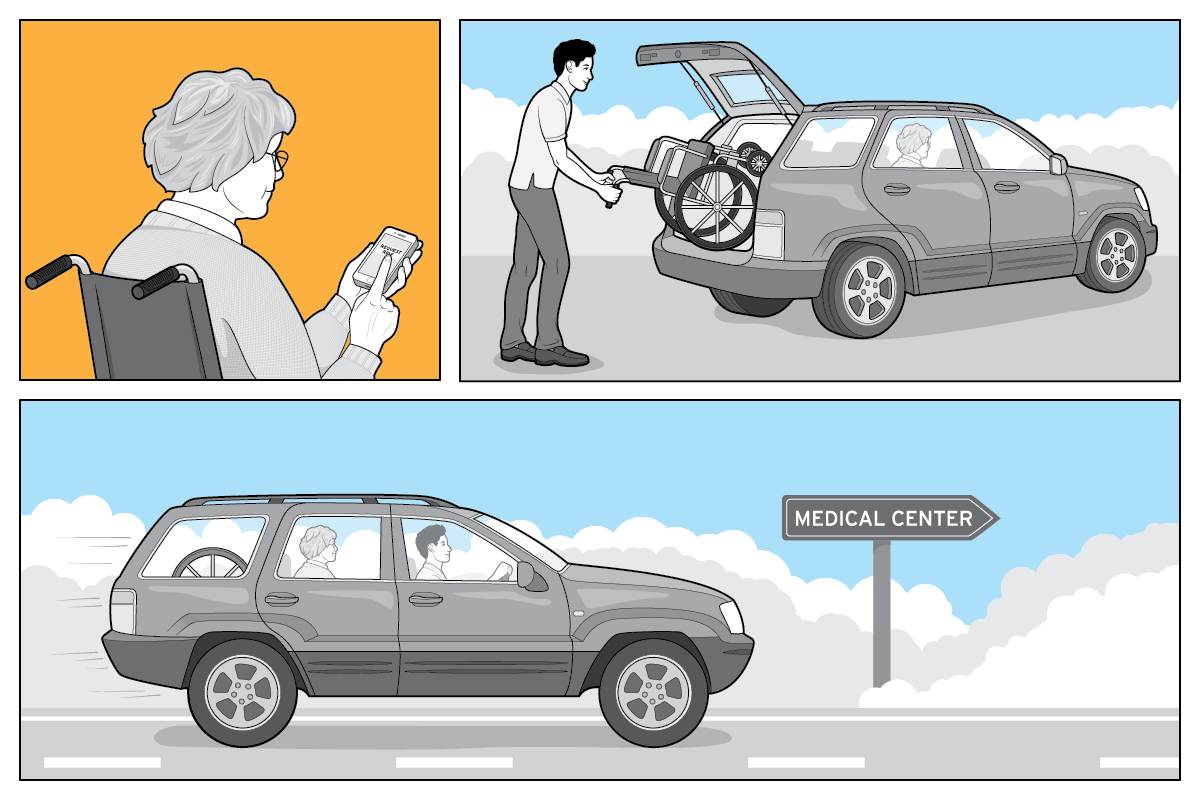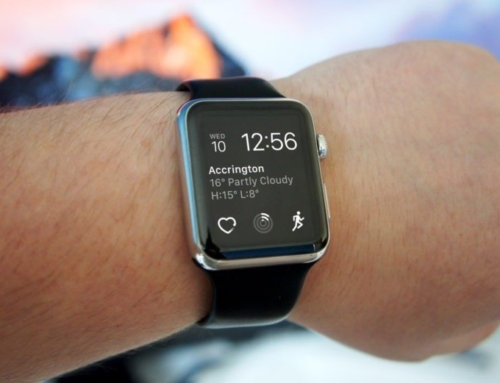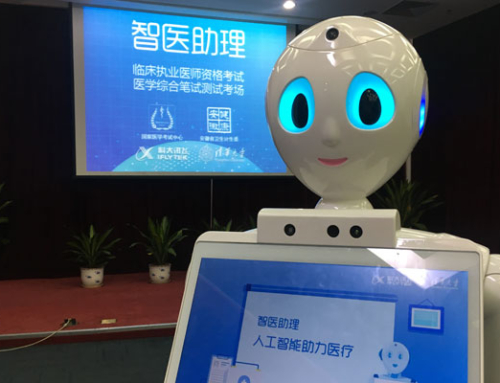After experiencing two seizures while behind the wheel—first plowing her car into the side of a drugstore and then, less than a year later, into a stone wall—Connie Godby gave up driving for good late last year. Even when she can control her seizures, vestiges of a brain tumor she suffered more than a decade ago, the arthritis curling her left hand makes it hard to grip the wheel. She recently moved from Kentucky to the Maryland suburbs of Washington, D.C., to live with her daughter and son-in-law, busy professionals with two small children and scarce time to ferry her around. So she does it with an app. She is now one of a growing number of seniors using ride-hailing services like Uber and Lyft to get around.
A graying America is also an America that is gradually, reluctantly, sometimes painfully giving up its keys. Driving can be dangerous for people with slowed reflexes and cognitive functioning, but not driving can be dangerous too: A lack of independent mobility leads many seniors to miss medical appointments and can isolate them from the social support network that is clinically shown to prolong life. Unfortunately, the nation’s transportation infrastructure relies heavily on cars. Faced with long rides on multiple trains and buses with unpredictable schedules, many seniors end up just staying home.
But today’s seniors are also aging at a time of rapidly multiplying transportation options in the private sector, with ride-hailing companies like Uber and Lyft at the front of the pack. Those companies blossomed amid the millennial-oriented sharing economy, serving wired young urbanites accustomed to meeting all their needs via smartphone. For some seniors, they represent the same kind of lifeline—although they also pose some new challenges.
The companies themselves have recognized the business potential of tapping into America’s rapidly growing senior population: Uber and Lyft are both busily building partnerships with senior care facilities and hospital centers. It’s not always easy, though, and their struggles are a window into the challenges of delivering tech-based solutions to a population that grew up in a very different world.
Godby uses a walker that folds up easily, not a wheelchair, which requires an entirely different kind of vehicle. And she uses a smartphone, but she’s in the minority—just 42 percent of Americans over 65 own a smartphone, compared with 77 percent of the general population.
To bridge that gap, some third parties, with names like GoGoGrandparent, have created hotlines seniors can call if they can’t or don’t want to use a smartphone to hail a ride—though they add a significant fee to the cost of each trip. Uber is sending representatives down to retirement homes in Florida to preach the gospel of ride-sharing to the senior set. All these are attempts to connect a useful mobility solution with a population that desperately needs one—but there’s still much to figure out.
TRANSPORTATION MIGHT SOUND like a secondary issue for older Americans, compared with massive needs like health care, but it’s almost as essential and gets far less public investment and policy attention. Getting around often represents the single biggest challenge of being old. Resource hotlines for elders report that transportation is the No. 1 reason people call—and often, they’re desperately looking for a ride to the doctor the next day. Lack of transportation access is a primary reason older people move into assisted-living facilities, a life change many would prefer not to make.
Public transportation can sometimes be an option for seniors, but the great majority live in suburban areas that are poorly served by transit. Even for those lucky enough to have convenient public transportation options nearby, simply learning to navigate a transit system—including all its accessibility options—can be intimidating; so much so that some systems, like Washington, D.C.’s, WMATA, have started providing customized transit trainings for senior citizens and people with disabilities.
Paratransit—on-demand, door-to-door minibus services run by transit authorities to supplement fixed-route bus and rail lines—is limited, expensive to run and generally doesn’t extend far beyond existing bus routes. Riders don’t like paratransit much either, since rides usually need to be booked at least 24 hours in advance. Even just going through the process of getting approved to use the service can be an ordeal.
All of this is what makes private vehicles such an attractive option—and cities are taking notice. This doesn’t always mean the newer ride-hailing companies: Last week, Washington, D.C., launched its “Abilities-Ride” service, which subsidizes taxi rides that people can use in place of paratransit. (The city chose the taxi companies over Uber and Lyft in part because of the better availability of wheelchair-accessible vehicles.) Arlington, Virginia’s, Area Agency on Aging also chose taxi companies—not ride-hailing companies—for its voucher program, selecting the companies it did because they had a track record of respectful customer service that went the extra mile for older customers, like helping people in and out of the car. Most importantly, though, they are willing to accept the vouchers, which don’t include tips.
But popular ride-hailing app-based services Uber and Lyft want a piece of the action, too. Lyft has staff dedicated to health care partnerships, and Uber has people focused on “mobility,” including access for the elderly and people with disabilities.
“On-demand transportation will really not just serve 18- to 25-year-olds who are out late at night,” said Allison Wylie, an Uber employee who works to strengthen connections with the senior community. “It’s something that can improve the lives of people who lose their keys.”
Boston’s Massachusetts Bay Transportation Authority is supplementing its paratransit program by using Uber and Lyft, which it subsidizes for qualified riders who don’t need the full assistance that paratransit provides. Riders who need help getting to or into the vehicle, or who use a wheelchair, are advised to stick with paratransit.
Those limitations illustrate the growing pains the ride-hailing companies are experiencing as they seek to serve a population with more complicated needs than the nimble young urbanites they’d grown accustomed to dealing with. Both companies provide wheelchair-accessible vehicles, but only in a very limited number of markets—and even those markets often have far too few vehicles. Uber, for its part, launched an UberAssist option in 2015 for people who need additional help, where specially trained drivers can help passengers in and out of vehicles, but it’s still operating at a small scale.
Lyft is working on ways for seniors without smartphones to use the service, but for now, the most widely available option is available only on the large-font, simple-screen Jitterbug phone target-marketed to the elderly. Riders press “0” on the phone to talk to an operator, who then orders the Lyft. The company clearly sees this as a growth area: It built a new platform, called Concierge, that allows the operators to request rides for others, and it has also brought the Concierge service to senior care centers and hospitals, making it easier for those facilities to request a ride on behalf of their clients. Similarly, Uber noticed that a lot of people were requesting pickups for a location other than their own—indicating that they were for someone else, often a parent or grandparent—and smoothed that process, a new feature it internally calls “UberBounce.” But neither of those are a full solution for app-averse seniors.
AFFORDABILITY IS ANOTHER barrier. Seniors often don’t have much discretionary income, and paratransit is heavily subsidized. Ride-hailing services are often cheaper than taxis, but the costs still add up, limiting mobility in a different way.
Some medical facilities and health insurers have started trying to pick up the burden themselves. Older patients miss subspecialty doctor appointments as much as 30 percent of the time, according to AARP, which can lead to costly emergency-room visits and ambulance rides. Some health care companies believe that driving down those no-show rates is worth the cost of an Uber ride. Hospitals in New York City and the Washington, D.C., metro area have started facilitating ride-booking to non-emergency medical appointments, with Medicaid and other insurance plans sometimes picking up the tab. BlueCross BlueShield has identified “transportation deserts” where medical care is hard to access without a car and are offering patients in those areas free access to Lyft as a way to reduce the number of missed appointments.
The trend has been aided by a recent ruling by the Department of Health and Human Services that it’s not a “kickback” for hospitals to pay for patients’ transportation, which could dramatically increase the medical sector’s participation in paying for on-demand rides.
In a more ambitious experiment, AARP Foundation just announced a new pilot program with UnitedHealthcare, Lyft and the University of Southern California to give free, unrestricted rides to people at high risk of missing a medical appointment. Participants will get three months of free rides for any purpose—not just medical—and their physical activity will be tracked on a FitBit. It amounts to a bet that increasing mobility will have positive effects beyond just making the appointment. Similar pilot programs are being considered for Chicago and Atlanta next year, but as of now it’s just a tiny test group.
Uber has suffered a slew of PR disasters, including the devastating #DeleteUber campaign, giving the company an extra incentive to show some compassion by providing services to a more challenging population. But it’s not all charity: It sees expanding the service to serve seniors, a rapidly growing slice of the population, as a good business investment.
Is it sustainable? That’s not clear yet; as big as they are, Uber and Lyft are still money-losing startups that compete with taxis by keeping their rates artificially low. For riders, those rates are a big part of the draw. The times she’s had trouble with the apps and ended up taking a taxi, Godby says she was floored by the high prices. And she finds that Uber and Lyft drivers almost always jump out to help her when they see her standing in front of the house with a walker.
“I’m not the bravest when it comes to making a change,” Godby said. “I don’t have many apps; I don’t want many apps. But it works.”
Tanya Snyder is a transportation reporter for POLITICO Pro.










